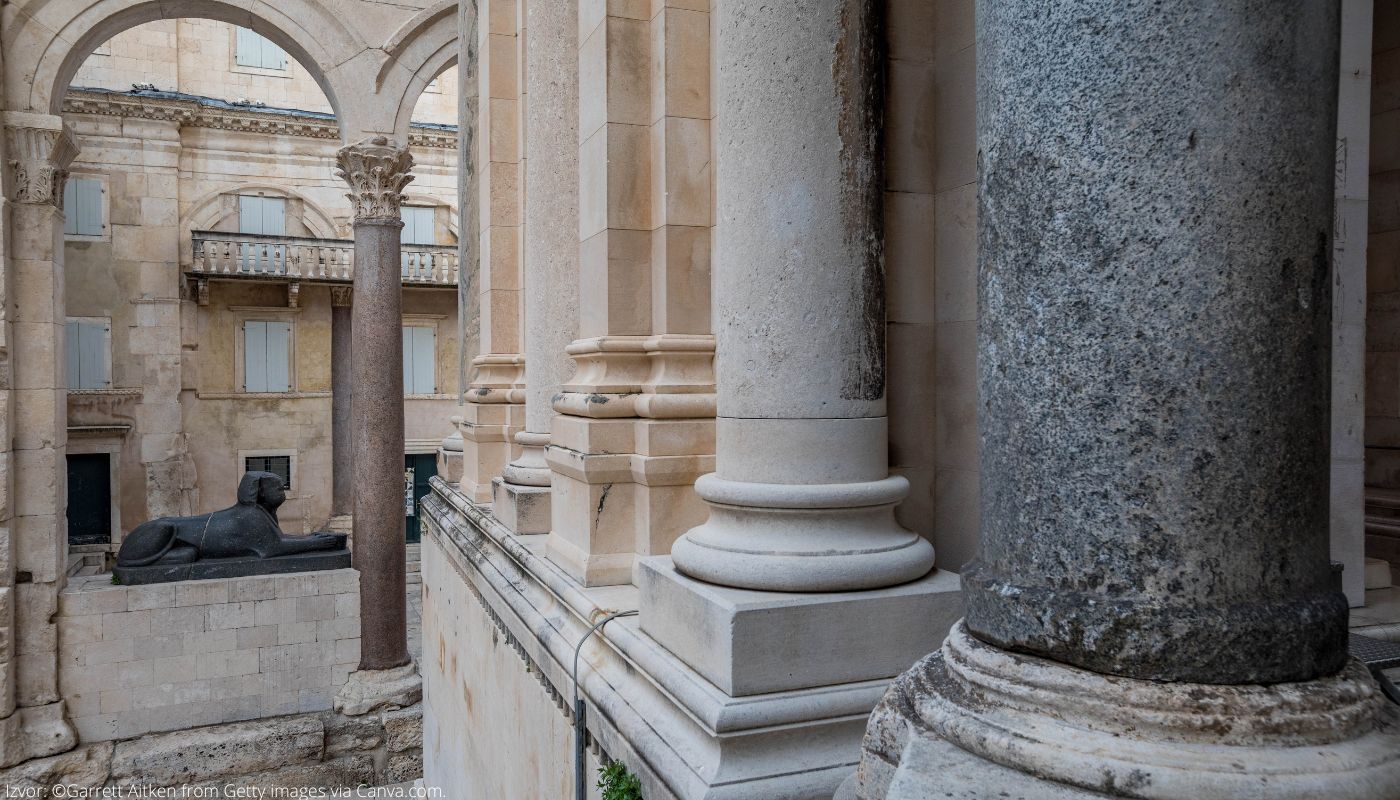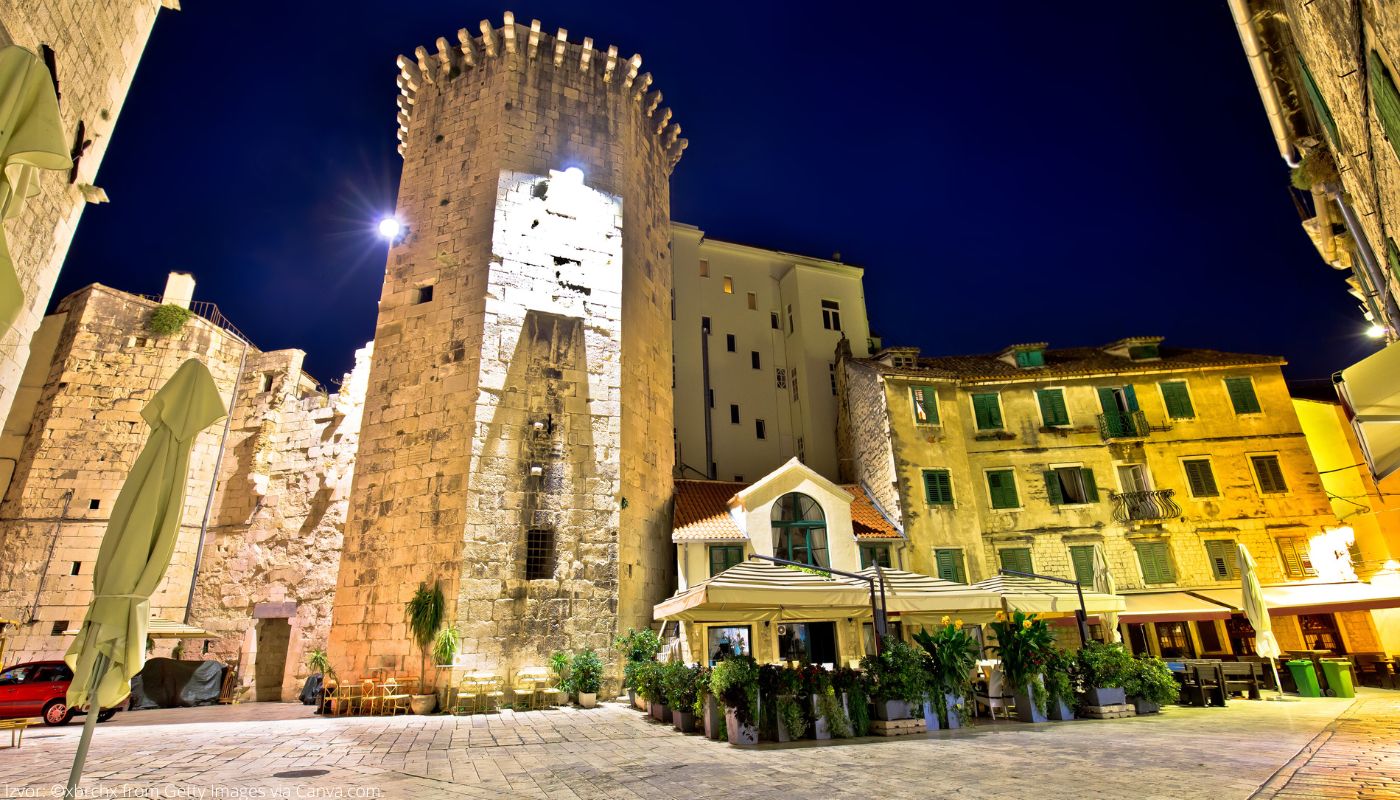Dioklecijanova palača
Share this attraction
Back

Dioklecijanova palača
Split
Diocletian's Palace - Most important information
Diocletian's Palace is an imposing building in Split, built by the famous ruler Diocletian back in the 3rd century. Compellingly, this Palace represents one of the best-preserved monuments of Roman architecture in the whole world. It was built after the abdication of Emperor Diocletian so that he could peacefully spend his last days there. Today, this building is one of the most important in Croatia and represents a great example of European, Mediterranean, and Adriatic cultural heritage.
History of Diocletian's Palace
It is believed that the construction of Diocletian's Palace began in the 3rd century. However, some sources say that many upgrades occurred during Diocletian's stay there. To this day, it is not known exactly who the builders of this Palace were, nor according to whose architectural idea it was built. Inside the Palace are several signatures of Greek names and builders, which leads to the conclusion that Diocletian hired mostly builders from the East. After the death of Emperor Diocletian in 316, life in the Palace continued to flow, and numerous transformations of the Palace took place. Since the existence of the Palace is imbued with the influence of pre-Romanesque, Romanesque, Gothic, and Renaissance cultures, it has experienced numerous changes in appearance and style throughout history. Because of all this, Diocletian's Palace was included in the UNESCO cultural heritage in 1979.
Characteristics of Diocletian's Palace
Diocletian's palace was built with extreme care, and each part had to have a specific function. Therefore, the castle was conceived as a building in which there would be the emperor's quarters and space for state and religious ceremonies, the army, servants, and the like.
History of Diocletian's Palace
It is believed that the construction of Diocletian's Palace began in the 3rd century. However, some sources say that many upgrades occurred during Diocletian's stay there. To this day, it is not known exactly who the builders of this Palace were, nor according to whose architectural idea it was built. Inside the Palace are several signatures of Greek names and builders, which leads to the conclusion that Diocletian hired mostly builders from the East. After the death of Emperor Diocletian in 316, life in the Palace continued to flow, and numerous transformations of the Palace took place. Since the existence of the Palace is imbued with the influence of pre-Romanesque, Romanesque, Gothic, and Renaissance cultures, it has experienced numerous changes in appearance and style throughout history. Because of all this, Diocletian's Palace was included in the UNESCO cultural heritage in 1979.
Characteristics of Diocletian's Palace
Diocletian's palace was built with extreme care, and each part had to have a specific function. Therefore, the castle was conceived as a building in which there would be the emperor's quarters and space for state and religious ceremonies, the army, servants, and the like.
- Diocletian's Palace was conceived as a military camp: In the beginning, Diocletian's Palace was conceived as a kind of military camp (castrum). Therefore, it was built as a combination of a luxury villa, a summer house, and a castrum, further divided into four parts. The palace was surrounded by ramparts, while the interior resembled a military camp. In addition to the three land entrances to the castle, there was one entrance from the seaside.
- Split Cathedral was once Diocletian's mausoleum: Split Cathedral, which today is dedicated to the Assumption of the Blessed Virgin Mary, used to be the emperor's mausoleum. It was located on the left side of the main street, and in historical sources, it is also mentioned as the Temple of Jupiter.
- The emperor's chambers are still preserved: The ground-floor sections of the emperor Diocletian are almost entirely preserved and based on their appearance, the layout of the entire furniture and rooms can be accurately determined. Inside his chambers, there were as many as 42 windows and three balconies from which there was a sea view. Also, most of the sewage system, which was designed back then, is still in use today.
How to get to Diocletian's Palace?
Diocletian's Palace was built on the Adriatic Sea coast, on a smaller peninsula's southern side. It is about 6.5 km from Solin. Due to its proximity to the center of Split, it is possible to reach the building on foot or by public transport. If you are in another city or country, you can also arrive by car.
Diocletian's Palace was built on the Adriatic Sea coast, on a smaller peninsula's southern side. It is about 6.5 km from Solin. Due to its proximity to the center of Split, it is possible to reach the building on foot or by public transport. If you are in another city or country, you can also arrive by car.
- On foot: From the center of Split, it is possible to walk to the Diocletian's Palace, it will take only 10 minutes. It is possible to reach it through the street called Homeland War.
- By bus: Bus lines 25, 28, and 60 run directly to the palace. You can wait for the bus at the Sukoišan Bus Terminal station, which will take you to the Pazar 1 stop. After that, walking a few steps will bring you to the palace.
- By car: It is possible to arrive from any city direction, and there are several marked public parking spaces in the vicinity of the palace.
Location
Learn more about this destination
Discover the beauty of the destination through blogs that highlight the most famous landmarks, hidden gems, and provide travel tips for visiting this destination. Embark on an adventure through the stories of experienced travelers.

























